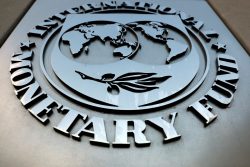As flood waters recede from the Upper Mazaruni area of Region Seven (Cuyuni-Mazaruni), the Middle Mazaruni is being affected and a team will visit shortly to assess the situation and see what relief can be given.
According to Regional Chairman Gordon Bradford, nine villages in the Upper Mazaruni were hit by the recent floods: Kamarang, Kako, Quebanang, Chinoweing, Jawalla, Philippai, Imbaimadai, Purima, Waramadong and their several satellite communities.
Bradford, who spoke to Stabroek News via phone yesterday explained that almost all of the farms in the villages affected by the flood had been submerged.
Though the water is receding, the damage has been done as the cassava crop, saturated with water, has begun to rot and to compound that situation there have been reports of huge flocks of wild hogs wreaking havoc on farms.
“They would usually reap their cassava between late May and early June. It just so happens that the change of the weather came and so most of them were caught by surprise… farms were under water in some cases five to six feet. Most of the crops were lost and we know this because we visited most of the farms and we saw with our own eyes, the effects of the flood,” the chairman related.
At the level of the Regional Democratic Council (RDC), Bradford said, the first intervention was in the form of visits to not only assess the extent of the floods but to also gather much needed information as regards village populations, household numbers and so forth.
A compilation of such information, he said, would be useful in the event of a reoccurrence of a flood or any other disaster.
“Now at the level of the Regional Democratic Council, we have a Disaster Management Committee that was formed by the CDC and of which I am the chairman; as soon as we heard what was happening in Region Eight, we sprang into action immediately by going out and conducting assessment in our region. But by time we got there, the water was already having its negative effect on the people there,” the chairman said.
Nonetheless, Bradford explained that the team which included him, a member of the CDC, a doctor, environmental health officer, secretary of the Disaster Management Committee, and an agriculture officer met with residents in all the affected villages and were able to distribute food stuff and a quantity of medical supplies.
“This is not 100% enough for the population but through meetings with the Toshaos and village councils, we have advised them that those who are most vulnerable will be looked after… But not only were we there to assess the situation, we also there to educate the residents on the prevention of diseases and so forth. We were able to reach out to the residents and advise them on proper sanitation methods in terms of washing their hands and feet, safe water sterilization processes and even the children to not play in the stagnant water that may remain,” the chairman said.
In terms of infrastructure damage, Bradford highlighted a main access bridge in Philippai which was washed away by the flood waters.
In addition to this, several parts of Phillipai had experienced landslides which affected mostly farms, customarily established at the foot of mountains.
“The damage in our region was not as bad as what we would have read happening in Region Eight, no houses were washed away or anything like that, but some houses were flooded which caused several families to relocate,” he added.
The region has since experienced several days of sunshine with scattered but light showers and the water also continues to recede.
However, with the water receding from the Upper Mazaruni, the middle Mazaruni area was now experiencing some amount of flooding in Isseneru, Kangaruma, Kurupung and Tasarene.
“We at the regional level will be meeting tomorrow to review our visit to the Upper Maz and to plan visits to the Middle Mazaruni… The rains fell all over and so all the water that is receding from the Upper Maz is flowing down there…We are planning to make a visit sometime this weekend to assess the situation there and to determine what intervention is needed,” he explained.
Work continues to be done from the forward logistics base at Kamarang where relief supplies earmarked for distribution are stored.
“So far we are thankful to members of the public, the government, the CDC; we must also mention firms like BK International for the use of their aircraft to fly in supplies,” he shared.
In the meantime, the RDC and the Disaster Risk Management Committee will continue to monitor the situation; they have also been looking at the weather reports and have been warned that the current weather pattern may continue up to the end of July.
“But as I said, we have been able to gather crucial information so we don’t have to rush into an area to get information of the number of households and things like that. We have this information and we plan to compile it so we would be better able to respond to such a situation if it were to reoccur,” the chairman reiterated.








